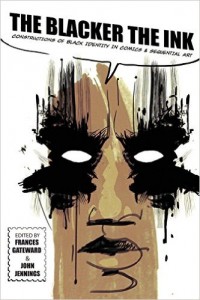CSUN Professor’s Anthology Explores the Way Blacks Are Portrayed in Comics
 Luke Cage, the first African-American superhero to get his own monthly comic book, first graced the newsstands in the 1970s in an attempt by Marvel Comics to ride the successful coattails of the era’s Blaxploitation film boom. As a person of color, Cage stood out in a comic book landscape of mostly white, male superheroes. People of color were also rarities on the mainstream newspaper comic pages.
Luke Cage, the first African-American superhero to get his own monthly comic book, first graced the newsstands in the 1970s in an attempt by Marvel Comics to ride the successful coattails of the era’s Blaxploitation film boom. As a person of color, Cage stood out in a comic book landscape of mostly white, male superheroes. People of color were also rarities on the mainstream newspaper comic pages.
Fast forward a few decades, and Cage is no longer an anomaly. African-American superheroes are more common — Marvel Comics even issued a series revealing that the first Captain America was African-American. Aaron McGruder’s “Boondocks” changed the complexion and tone of the comic pages, and Kyle Baker’s graphic novel “Nat Turner” has been hailed for provocative telling the story of the insurgent slave.
A new anthology by California State University, Northridge cinema and television arts associate professor Frances Gateward, “The Blacker the Ink,” explores the construction of black identity, first on the comic pages and later in comic books and graphic novels. The book, co-edited with John Jennings, recently was awarded the Ray and Pat Browne Award for Best Edited Collection in Popular Culture and American Culture by the Popular Culture Association/American Culture Association.
“We’re at an interesting crossroads at the moment,” Gateward said. “The world of comics and graphics novels — the world of what we now call sequential art — is expanding by leaps and bounds, and that means that the stories that are being told are expanding, and including more and different voices.”
Gateward said the 15 essays in the book, written by academics, explore a gamut of sequential art — from the early days of newspaper comic pages to graphic novels, with subjects such as race and science fiction, gender construction, colonialism and African American history.
Comics have always been part of popular culture, serving as a way to illustrate or comment on contemporary society. How people are portrayed, however, depends on who controls the publication, Gateward said.
The emergence of African-American newspapers in the early 20th century, she said, offered an alternative portrayal of African-American life to those found in the stereotype-riddled images of more mainstream publications.
“The people in power wanted to define what blackness was, rather than let the Black people define themselves,” she said.
As African-American artists began to publish independently — and to find jobs at Marvel and DC Comics — and they began to tell their own stories in the comic pages and graphic novels. “Stories of who we are and what we are capable of began to change,” Gateward said.
“Today, you can have a black-Latino Spiderman, and people, regardless of race, are reading the story,” she said. “We’re not there yet, but we’re getting there. It’ll be interesting to see what the future brings.”

 experience
experience